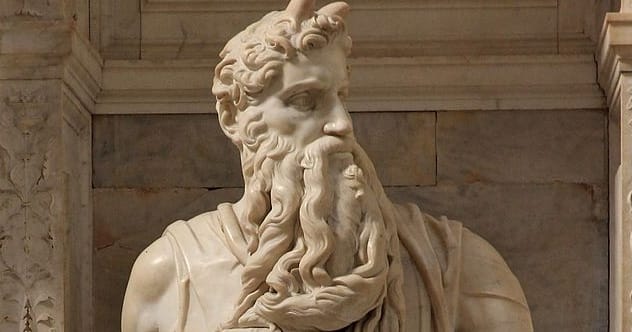Art is often seen as the expression of individual genius. Artists find their unique voice and medium through sheer force of will. However, art doesn’t exist in isolation. Many unexpected factors can shape the art world. Here are ten of the most curious.
Monet’s Cataracts

Claude Monet, a founder of Impressionism, named the movement with his painting “Impression, Sunrise.” Impressionists focused on capturing light and motion, often resulting in a blurred effect. But could Monet’s need for cataract surgery have influenced this very blurriness?
At 85, Monet had his cataracts removed. Scientists studying his famous water lily series discovered that as his cataracts worsened, the vibrant colors became muddied. This suggests his impaired vision significantly shaped his artistic style.
Vermeer’s Camera
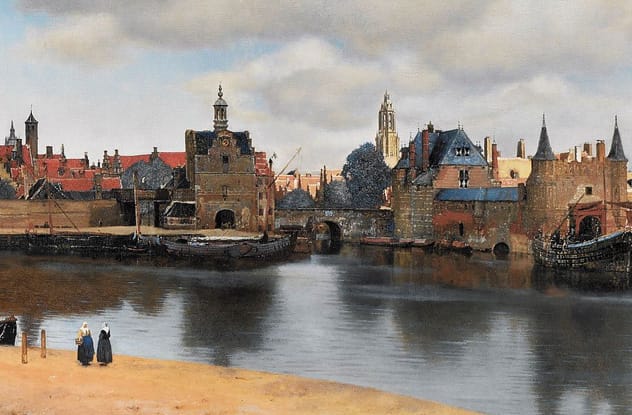
For over a century, there’s been debate about whether Johannes Vermeer used optical devices. Some art historians believe he employed a camera obscura to project images onto his canvas.
A 2013 film, Tim’s Vermeer, showed an inventor successfully painting his own Vermeer using a camera obscura, despite having no prior painting experience. Artist David Hockney is convinced Vermeer used this tool, though skepticism remains in the art world.
Ugly Medieval Babies
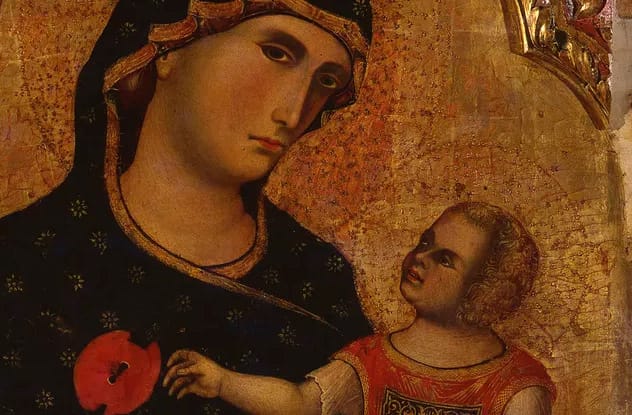
Medieval paintings are dominated by religious themes, especially depictions of the Christ child. Yet, many of these babies have rather unattractive faces. Why?
Medieval theology may provide an explanation. Jesus was believed to have been born “perfectly formed and unchanged,” depicted as a homunculus, or “little man.” This style faded during the Renaissance when people desired realistic portraits of their own children.
Van Gogh’s Color Blindness
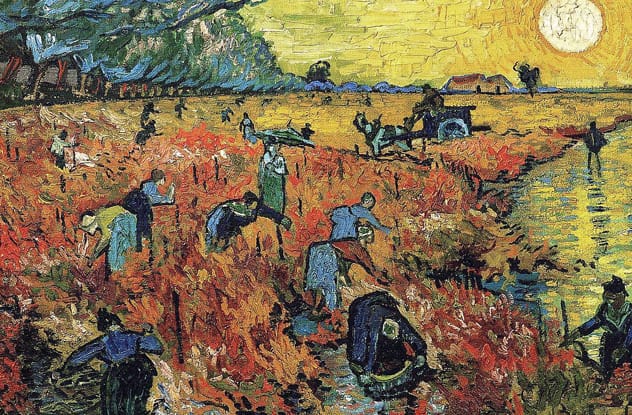
Vincent van Gogh’s vibrant use of color makes it hard to believe he might have been color blind. However, Kazunori Asada suggests that van Gogh may have lacked the ability to distinguish reds.
By filtering light, Asada simulates how Van Gogh’s paintings might have appeared to him and others with similar deficiencies. While not universally accepted, this theory prompts intriguing questions about artistic creation.
The Virgin Mary’s Blue Cloak
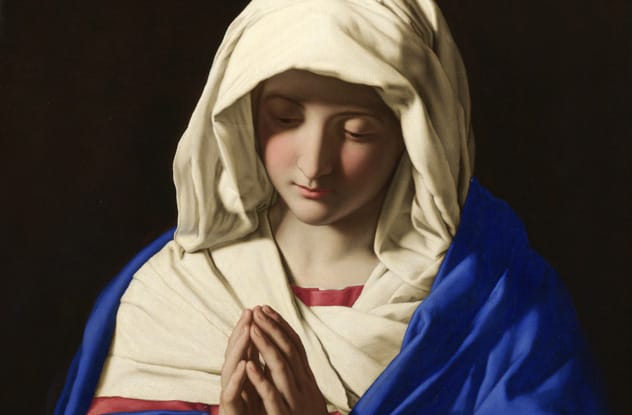
Economic factors, as well as theology, can influence art. Renaissance paintings of the Virgin Mary often depict her wearing a blue cloak, despite no scriptural basis for this preference. Why?
The answer lies in the trade routes to Afghanistan. Bright blue pigments were scarce until Lapis Lazuli, a blue mineral, reached Europe. Its long journey made ultramarine, the pigment derived from it, extremely expensive. Only the most important commissions, mostly religious, could afford it, resulting in Mary’s iconic blue cloak.
Handedness In Cave Art
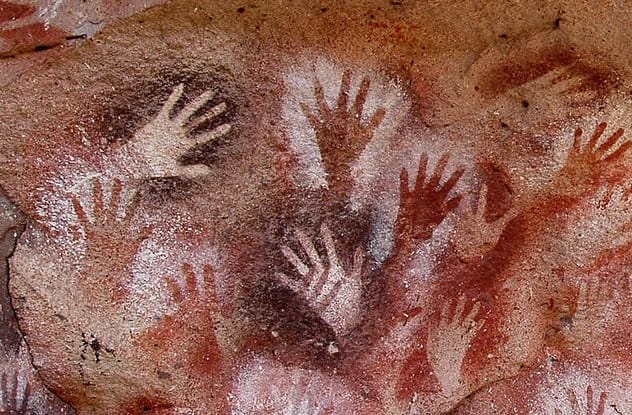
We take handedness for granted today. But how can we determine if prehistoric people were left- or right-handed?
Ancient cave paintings often feature handprints created by blowing pigment over a hand pressed against the wall. The hand holding the pigment tube would likely be the dominant one. By analyzing the proportions of left and right handprints, we can estimate handedness in ancient populations.
Egyptians Only Had Profiles

Egyptian art is known for its use of profiles. But did Egyptians actually never look at each other face-to-face? Their statues prove they could depict the human form realistically, so why the consistent profile view in paintings and carvings?
Egyptian art wasn’t about realism. Instead, it aimed to capture the essence and recognizable aspects of a person or object. This explains why shoulders are shown frontally, while faces, arms, and legs are depicted from the side, similar to stylized hieroglyphs.
Lop-Sided Male Statues
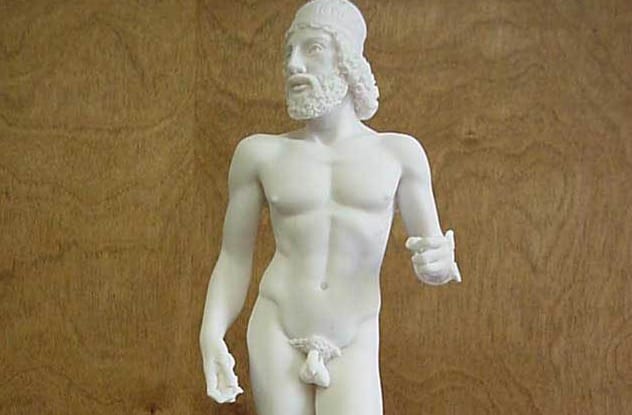
Classical Greek statues idealized the human form, adhering to mathematical harmony. Most were nude, allowing detailed study. But Dr. Chris McManus observed asymmetry in the testicles of these statues.
Typically, men have one testicle lower and larger than the other. In Greek statues, while the right was higher, the left was often depicted as larger. This may symbolize the ancient belief that each testicle produced male or female children, with the larger one signifying prowess in producing sons.
Moses’s Horns
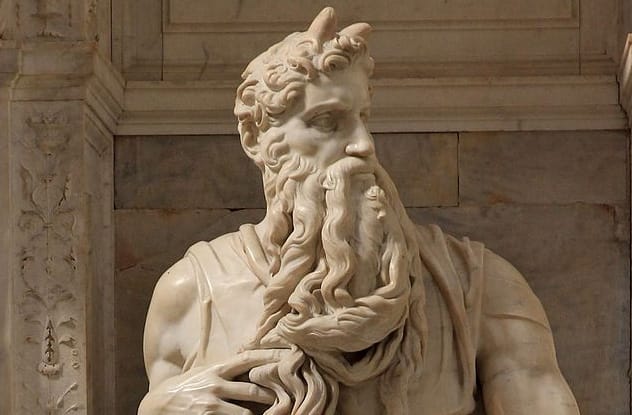
Translation errors can have lasting effects. A blunder in the Vulgate Bible, the Latin text used by the Catholic Church, has led to some unusual depictions of Moses.
Exodus 33 in the Vulgate describes Moses descending Mount Sinai with a “horned” face, leading to Michelangelo’s famous statue with horns. However, other translations suggest Moses’s face was actually radiant. The Hebrew text is complex, and the interpretation remains debated.
St. Christopher’s Dog Head
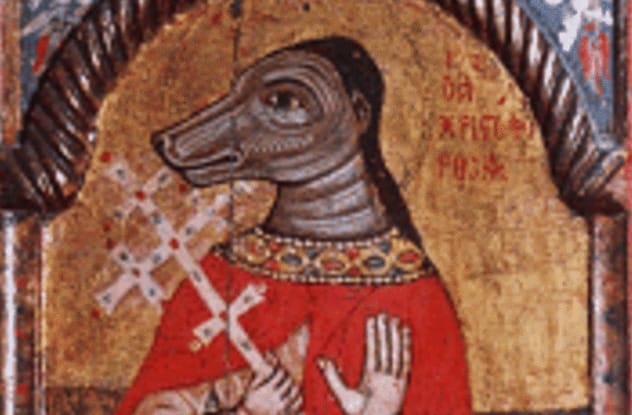
Religious art is usually respectful, but Eastern Orthodox icons of St. Christopher are peculiar: he has the head of a dog.
The most likely explanation is another mistranslation. St. Christopher was described as Cananeus (a Canaanite), possibly misread as Canineus (canine). The ancients commonly believed in half-human races. Thus, icon painters might have imagined St. Christopher with a dog’s head.
These ten examples reveal that artistic styles are not solely the product of individual genius. They are often influenced by unexpected factors like medical conditions, technological advancements, economic realities, and even simple misunderstandings. What other hidden influences might be lurking in art history?
Share your thoughts in the comments below!


